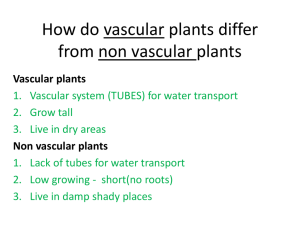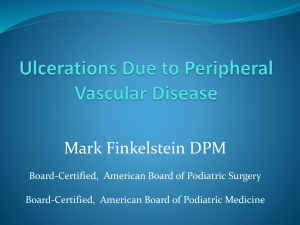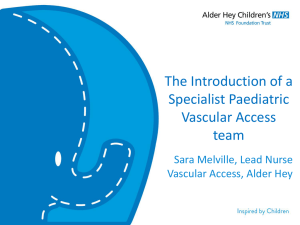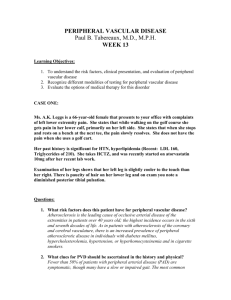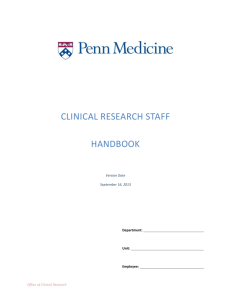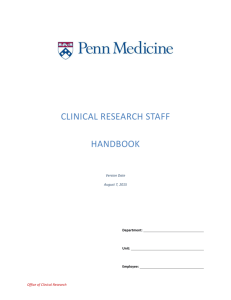Vascular Newsletter - University of Pennsylvania School of Medicine
advertisement
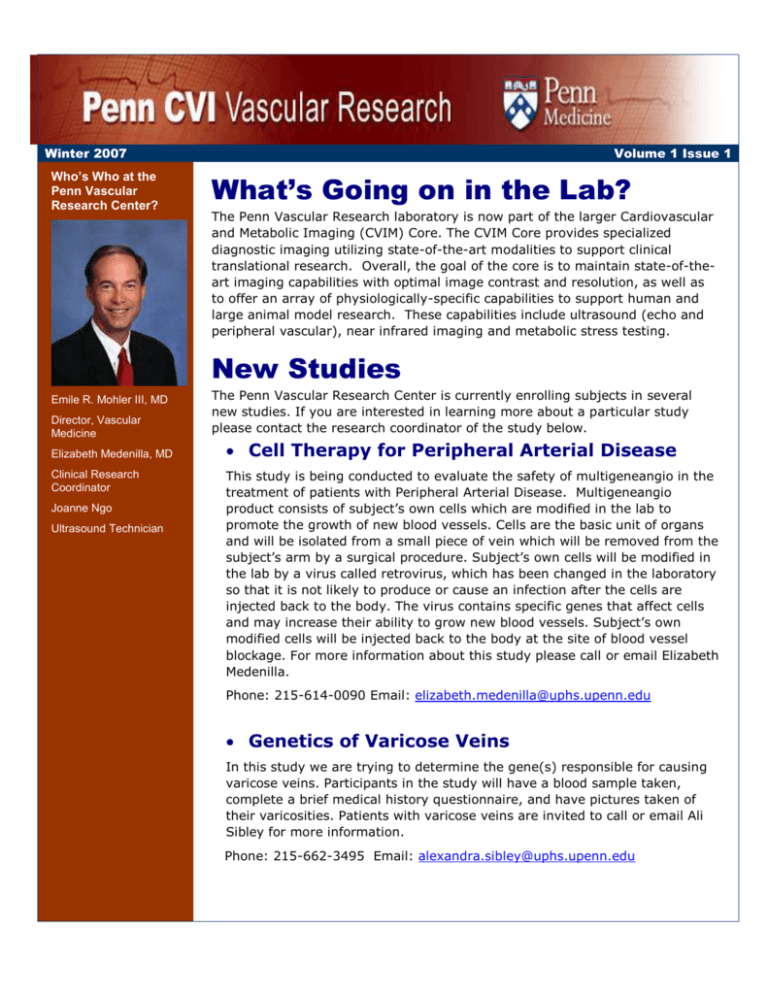
Winter 2007 Who’s Who at the Penn Vascular Research Center? Volume 1 Issue 1 What’s Going on in the Lab? The Penn Vascular Research laboratory is now part of the larger Cardiovascular and Metabolic Imaging (CVIM) Core. The CVIM Core provides specialized diagnostic imaging utilizing state-of-the-art modalities to support clinical translational research. Overall, the goal of the core is to maintain state-of-theart imaging capabilities with optimal image contrast and resolution, as well as to offer an array of physiologically-specific capabilities to support human and large animal model research. These capabilities include ultrasound (echo and peripheral vascular), near infrared imaging and metabolic stress testing. New Studies Emile R. Mohler III, MD Director, Vascular Medicine Elizabeth Medenilla, MD Clinical Research Coordinator Joanne Ngo Ultrasound Technician The Penn Vascular Research Center is currently enrolling subjects in several new studies. If you are interested in learning more about a particular study please contact the research coordinator of the study below. Cell Therapy for Peripheral Arterial Disease This study is being conducted to evaluate the safety of multigeneangio in the treatment of patients with Peripheral Arterial Disease. Multigeneangio product consists of subject’s own cells which are modified in the lab to promote the growth of new blood vessels. Cells are the basic unit of organs and will be isolated from a small piece of vein which will be removed from the subject’s arm by a surgical procedure. Subject’s own cells will be modified in the lab by a virus called retrovirus, which has been changed in the laboratory so that it is not likely to produce or cause an infection after the cells are injected back to the body. The virus contains specific genes that affect cells and may increase their ability to grow new blood vessels. Subject’s own modified cells will be injected back to the body at the site of blood vessel blockage. For more information about this study please call or email Elizabeth Medenilla. Phone: 215-614-0090 Email: elizabeth.medenilla@uphs.upenn.edu Genetics of Varicose Veins In this study we are trying to determine the gene(s) responsible for causing varicose veins. Participants in the study will have a blood sample taken, complete a brief medical history questionnaire, and have pictures taken of their varicosities. Patients with varicose veins are invited to call or email Ali Sibley for more information. Phone: 215-662-3495 Email: alexandra.sibley@uphs.upenn.edu Ongoing Studies Evaluation of Digital Telangiectasies Using Photo Illumination Telangiectasies are small, curly arteries. In this study, we will be using photo-illumination of the fingertip to evaluate for telangiectasies in patients with the genetic condition HHT (). Participants in the study will have photos taken of their fingertips, complete a brief medical history questionnaire, and have an ultrasound of the finger performed. For more information about this study please call or email Ali Sibley. Phone: 215-662-3495 Email: alexandra.sibley@uphs.upenn.edu Exercise VS. Endoluminal Revascularization This study is being conducted to evaluate the use of stents compared to supervised exercise therapy and to also compare each of these treatments to optimal medical care. Optimal medical care for most people with claudication includes encouragement to stop smoking, use of home based unsupervised exercise, and use of claudication medication. For more information about this study please call or email Elizabeth Medenilla. Phone: 215-614-0090 Email: elizabeth.medenilla@uphs.upenn.edu Additional Vascular Studies TRA 2P – TIMI 50: A Multicenter, Randomized, Double-Blind , PlaceboControlled Study to Evaluate the Safety and Efficacy of SCH 530348 in Addition to Standard of Care in Subjects With a History of Atherosclerotic Disease: Thrombin Receptor Antagonist in Secondary Prevention of Atherothrombotic Ischemic Events. Goal: Since antiplatelet agents have produced clinical benefits in the management of atherosclerosis, this study will examine the benefit in secondary prevention of a novel antiplatelet target, namely inhibiting the thrombin activation of platelets through PAR-1. Inclusion criteria: Greater than 18 years old with at least 1 of the following: 1. Coronary artery disease: history of myocardial infarction > 2 weeks but < 1 year 2. Cerebrovascular disease: ischemic stroke > 2 weeks but < 1 year 3. Peripheral arterial disease: claudication with ABI < 0.85, prior amputation, peripheral bypass or angioplasty Exclusion criteria include treatment with coumadin. (Plavix and aspirin are not exclusion criteria) For more information about this study please contact Susanne Donovan, MS, RN or Douglas Jacoby, MD at 215-662-9084 Staff Information The Penn Vascular Research Center would like to formally welcome our new ultrasound technician Joanne Ngo. Joanne is a graduate of Jeffereson University and started working at the lab this summer. We would also like to welcome Dr. LiFeng Zhang to the lab. LiFeng comes to our lab from China and we are very happy to have her on staff. Penn Vascular Research Center 4th Floor Penn Tower Hospital of the University of Pennsylvania Philadelphia, PA 19104 Phone: (215) 662-3275 Fax: (215) 662-5585 E-mail: Alexandra.sibley@uphs.u penn.edu We’re on the Web! http://www.med.upenn. edu/vascular/ Recent Publications **Mohler ER III, Fang Y, Shaffer RG, Moore J, Wilensky RL, Parmacek M, Levitan I. Hypercholesterolemia Suppresses Kir Channels in Porcine Bone Marrow Progenitor Cells In Vivo. Biochemical and Biophysics Research Communications 2007 June 22; 358(1):317-24. **Mohler ER III, O’Hare K, Darze ES, Townsend RR, Bridges CR Jr., Keane MG. Cardiovascular Function in Normotensive Offspring of Persons with Essential Hypertension and Black Race. J Clin Hypertens. 2007 Jul; 9(7):506-12 **Mohler ER, Wang H, Medenilla E, Scott C. Effect of Statin Treatment on Aortic Valve and Coronary Artery Calcification. The Journal of Heart Valve Disease, 2007 Jul; 16(4):378-86. **Mohler ER, Mantha S, Miller AB, Poldermans D, Cropp AB, Aubin LB, Billing CB, Jr., Fleisher LA. Should Troponin and Creatinine Kinase Be Routinely Measured After Vascular Surgery? Vascular Medicine. 2007 August; 12(3): 175-181.


